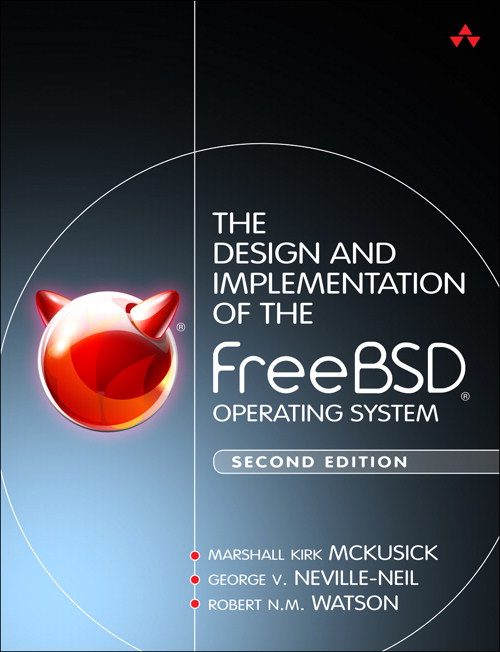
Now available: The Design and Implementation of the FreeBSD Operating System (Second Edition)
[ source navigation ] [ diff markup ] [ identifier search ] [ freetext search ] [ file search ] [ list types ] [ track identifier ]
FreeBSD/Linux Kernel Cross Reference
sys/ufs/ufs/README.extattr
Version:
- FREEBSD - FREEBSD-13-STABLE - FREEBSD-13-0 - FREEBSD-12-STABLE - FREEBSD-12-0 - FREEBSD-11-STABLE - FREEBSD-11-0 - FREEBSD-10-STABLE - FREEBSD-10-0 - FREEBSD-9-STABLE - FREEBSD-9-0 - FREEBSD-8-STABLE - FREEBSD-8-0 - FREEBSD-7-STABLE - FREEBSD-7-0 - FREEBSD-6-STABLE - FREEBSD-6-0 - FREEBSD-5-STABLE - FREEBSD-5-0 - FREEBSD-4-STABLE - FREEBSD-3-STABLE - FREEBSD22 - l41 - OPENBSD - linux-2.6 - MK84 - PLAN9 - xnu-8792
SearchContext: - none - 3 - 10
SearchContext: - none - 3 - 10
1 $FreeBSD: releng/5.2/sys/ufs/ufs/README.extattr 105417 2002-10-18 21:11:36Z rwatson $ 2 3 UFS Extended Attributes Copyright 4 5 The UFS Extended Attributes implementation is copyright Robert Watson, and 6 is made available under a Berkeley-style license. 7 8 About UFS Extended Attributes 9 10 Extended attributes allow the association of additional arbitrary 11 meta-data with files and directories. Extended attributes are defined in 12 the form name=value, where name is an nul-terminated string in the style 13 of a filename, and value is a binary blob of zero or more bytes. The UFS 14 extended attribute service layers support for extended attributes onto a 15 backing file, in the style of the quota implementation, meaning that it 16 requires no underlying format changes in the filesystem. This design 17 choice exchanges simplicity, usability and easy deployment for 18 performance. When defined, extended attribute names exist in a series of 19 disjoint namespaces: currently, two namespaces are defined: 20 EXTATTR_NAMESPACE_SYSTEM and EXTATTR_NAMESPACE_USER. The primary 21 distinction lies in the protection model: USER EAs are protected using the 22 normal inode protections, whereas SYSTEM EAs require privilege to access 23 or modify. 24 25 Using UFS Extended Attributes 26 27 Support for UFS extended attributes is natively available in UFS2, and 28 requires no special configuration. For reliability, administrative, 29 and performance reasons, if you plan to use extended attributes, it 30 is recommended that you use UFS2 in preference to UFS1. 31 32 Support for UFS extended attributes may be enabled for UFS1 by adding: 33 34 options UFS_EXTATTR 35 36 to your kernel configuration file. This allows UFS-based filesystems to 37 support extended attributes, but requires manual administration of EAs 38 using the extattrctl tool, including the starting of EA support for each 39 filesystem, and the enabling of individual attributes for the file 40 system. The extattrctl utility may be used to initialize backing files 41 before first use, to start and stop EA service on a filesystem, and to 42 enable and disable named attributes. The command lines for extattrctl 43 take the following forms: 44 45 extattrctl start [path] 46 extattrctl stop [path] 47 extattrctl initattr [-f] [-p path] [attrsize] [attrfile] 48 extattrctl enable [path] [attrnamespace] [attrname] [attrfile] 49 extattrctl disable [path] [attrnamespace] [attrname] 50 51 In each case, [path] is used to indicate the mounted filesystem on which 52 to perform the operation. [attrnamespace] refers to the namespace in 53 which the attribute is being manipulated, and may be "system" or "user". 54 The [attrname] is the attribute name to use for the operation. The 55 [attrfile] argument specifies the attribute backing file to use. When 56 using the "initattr" function to initialize a backing file, the maximum 57 size of attribute data must be defined in bytes using the [attrsize] 58 field. Optionally, the [-p path] argument may be used to indicate to 59 extattrctl that it should pre-allocate space for EA data, rather than 60 creating a sparse backing file. This prevents attribute operations from 61 failing in low disk-space conditions (which can be important when EAs are 62 used for security purposes), but pre-allocation will consume space 63 proportional to the product of the defined maximum attribute size and 64 number of attributes on the specified filesystem. 65 66 Manual configuration increases administrative overhead, but also 67 introduces the possibility of race conditions during filesystem mount, if 68 EAs are used to support other features, as starting the EAs manually is 69 not atomic with the mount operation. To address this problem, an 70 additional kernel option may be defined to auto-start EAs on a UFS file 71 system based on special directories at mount-time: 72 73 options UFS_EXTATTR_AUTOSTART 74 75 If this option is defined, UFS will search for a ".attribute" 76 sub-directory of the filesystem root during the mount operation. If it 77 is found, EA support will be started for the filesystem. UFS will then 78 search for "system" and "user" sub-directories of the ".attribute" 79 directory for any potential backing files, and enable an EA for each valid 80 backing file with the name of the backing file as the attribute name. 81 For example, by creating the following tree, the two EAs, 82 posix1e.acl_access and posix1e.acl_default will be enabled in the system 83 namespace of the root filesystem, reserving space for attribute data: 84 85 mkdir -p /.attribute/system 86 cd /.attribute/system 87 extattrctl initattr -p / 388 posix1e.acl_access 88 extattrctl initattr -p / 388 posix1e.acl_default 89 90 On the next mount of the root filesystem, the attributes will be 91 automatically started.
Cache object: 4bd1ba0f9fc6c40bf434ad52a7485ed0
[ source navigation ] [ diff markup ] [ identifier search ] [ freetext search ] [ file search ] [ list types ] [ track identifier ]